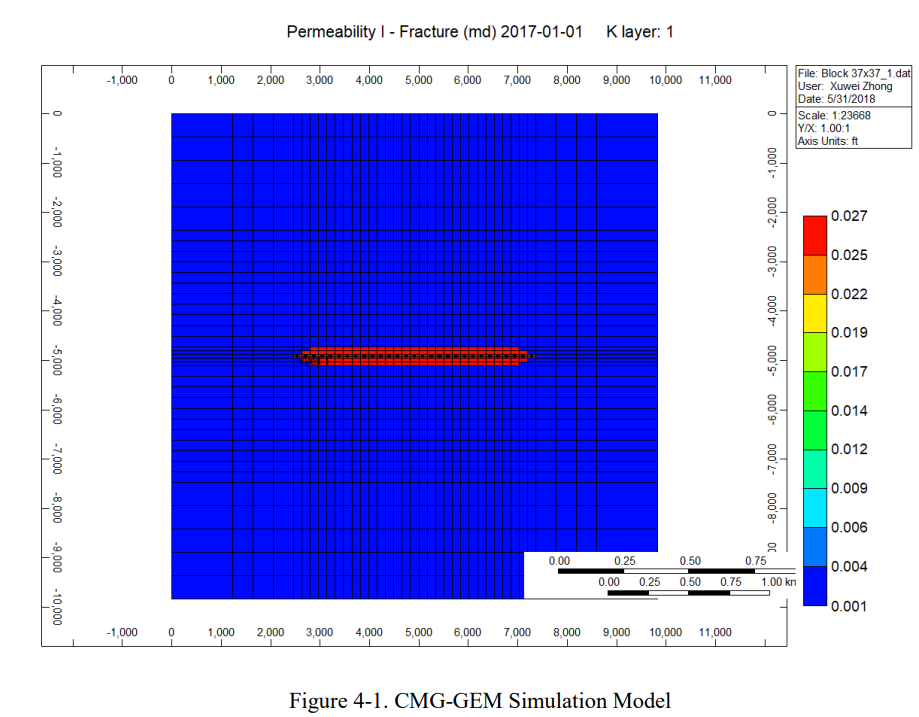PRESSURE TRANSIENT ANALYSIS OF SHALE GAS RESERVOIRS WITH
HORIZONTAL BOREHOLES: AN ARTIFICIAL INTELLIGENCE BASED APPROACH
ABSTRACT
In common oil and gas industry, obtaining reservoir properties is critical to field development. Well testing has been one of the important tools to estimate reservoir characteristics such as permeability and reservoir thickness. The purpose of this study is to develop an expert system that can estimate reservoir characteristics based on constant flow rate pressure transient data from horizontal wells located in shale gas reservoirs.
A commercial compositional reservoir simulator CMG-GEM was used in this study. An isotropic square reservoir model with one lateral well at the center was built. The model utilized stimulated reservoir volume (SRV) approach to represent the fractured zone of the reservoir. The SRV zone was more prolific than the rest of the reservoir due to its higher permeability and smallerfracture spacing. 37 x 37 reservoir blocks configuration was selected to use in the model after performing a grid block sensitivity analysis.
Since this study requires training of the expert system, large number of data need to be generated. 15 reservoir and well completion parameters were selected as variables in specified ranges. Several MATLAB scripts were created to randomize the input variables and to build thousands of simulation models. The pressure transient data were collected in a numerical table after each model ran.
The expert systems included seven Artificial Neural Networks (ANN). The ANNs were all generated by using MATLAB ANN Toolbox. The ANNs were classified into forward ANN and inverse ANN. The forward ANN was able to predict pressure transient data, while the inverse ANN was capable of predicting reservoir properties.
During the final stage of this study, five graphical user interfaces (GUI) were developed. The GUIs allow the user to input required parameters, and to view results in numerical and graphical formats.


